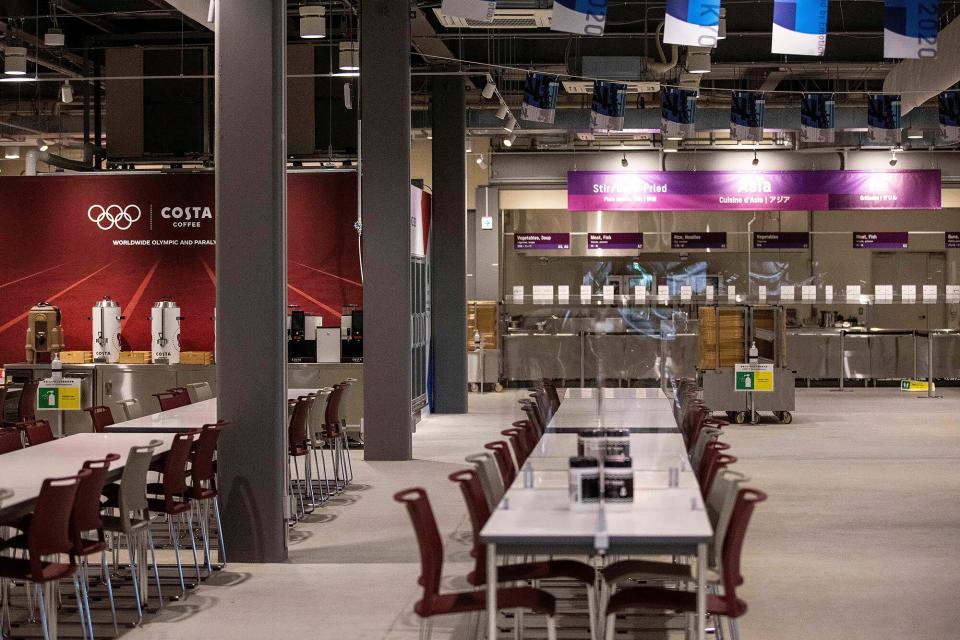Here's What Athletes are Eating at the Olympic Village in Tokyo
The organizers of the Tokyo Olympic games apologized for throwing away around 4,000 of the 10,000 food-filled bento boxes that were pre-ordered for volunteers on the day of the Opening Ceremony. The boxes had to be discarded due to the organizers' fear of running out of food — which caused them to order significantly more meals than they needed — and the fact that those who were working last Friday's big event didn't get a chance to stop and eat.

Behrouz Mehri / AFP via Getty Images
"On the day of the opening ceremony at the Olympic Stadium, the large number of staff on duty meant that all of the volumes were large, and a lot of the food was not consumed," organizing committee spokesperson Masanori Takaya said, according to Kyodo News. "We apologize for the huge waste."
The discarded food will either be turned into animal feed, or used for "biomass power generation." Takaya said that the committee had since revised their ordering procedure, to ensure that they didn't end up with, you know, a 40 percent surplus going forward. As far as the athletes' meals go, apparently they're pretty incredible. AFP reports that the dining halls in the Olympic village serve around 48,000 meals every day, for the 18,000 competitors who are calling the village for the next couple of weeks. There are 700 menu items, 2,000 staff members during peak times, and the Olympics' first-ever gluten-free section.
The Games' food and beverage pros have been tasked with giving the athletes an authentic taste of Japan, because this is as close as they're going to get. According to the news outlet, the country's ongoing coronavirus restrictions prohibit the competitors from going to any local restaurants. "I feel it's a lot of responsibility for us," Tsutomu Yamane, the senior director of Tokyo 2020's food and beverages services department said. "We want them to enjoy [Japanese food] … but it's major pressure."
The ingredients used in the meals have been sourced from all 47 prefectures of Japan, and the menu has been divided into Japanese, Western, and Asian categories (the latter includes cuisine from China, India, and Vietnam). Ramen and udon noodles, wagyu beef, and tempura vegetables and seafood are all available, but raw sushi is not: according to the Games' safety rules, sushi rolls can only contain fully cooked shrimp, canned tuna, or vegetarian options like cucumber and pickled plums.
Despite the chefs' initial concerns, the meals seem to be incredibly well-received. "Not to be dramatic, but these are the best gyoza dumpling things I've ever had in my life," American rugby player Ilona Maher said in a TikTok video, which she captioned "I eat them for every meal." (She's also a fan of the deep-fried Camembert cheese.)
In his own TikTok, American volleyball player Erik Shoji showed off his dinner from the Olympic Village's casual dining hall, which included somen salad, teriyaki beef, rice balls, grilled pork, buttered corn, fresh fruit, and okonomiyaki, a savory Japanese pancake that is popular in the western Osaka region. In another video, he detailed his post-match lunch, which featured edamame, "some sort of musubi," more corn, another somen salad, and a big piece of watermelon for dessert.
These TikToks are making us hungry — can somebody tell us a little more about the deep-fried cheese?

